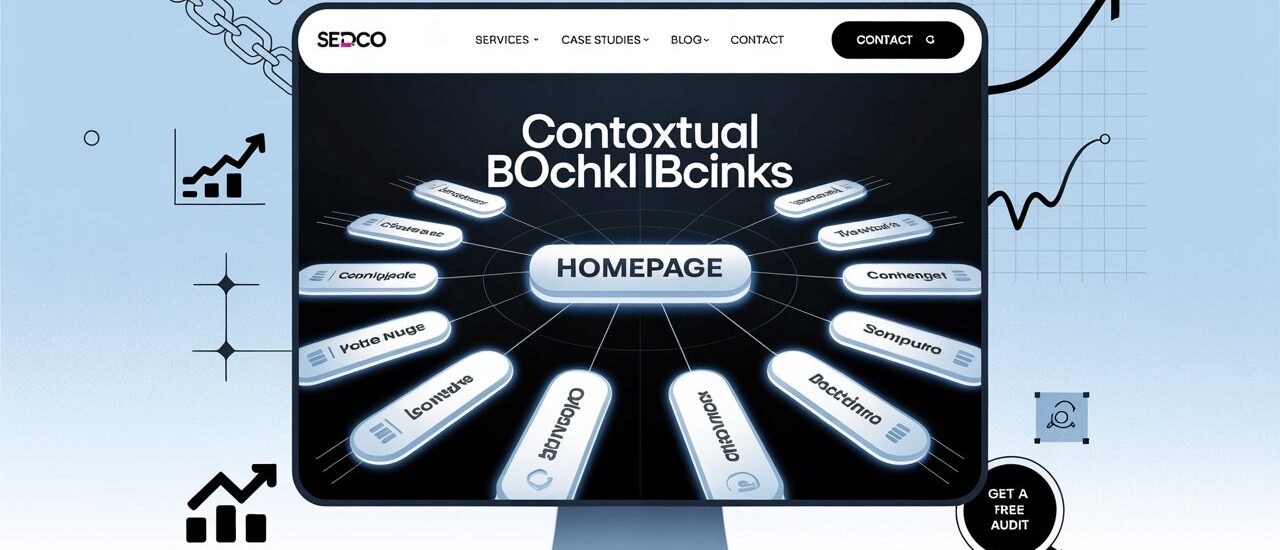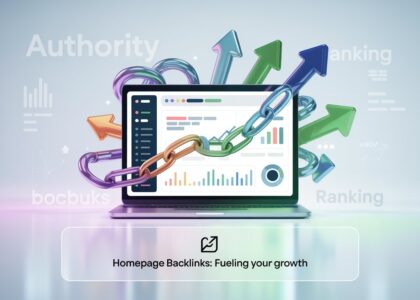In the competitive world of SEO, contextual homepage backlinks have emerged as one of the most powerful tools to boost your website’s authority, drive targeted traffic, and secure top rankings on Google’s first page. Unlike generic backlinks, contextual backlinks are embedded naturally within relevant content, making them highly valuable in the eyes of search engines. This article explores what contextual homepage backlinks are, why they matter, and how to strategically build them to maximize your SEO performance.
What Are Contextual Homepage Backlinks?
Contextual backlinks are hyperlinks placed within the main body of content on a webpage that is topically relevant to the linked page. When these links point specifically to your homepage, they are called contextual homepage backlinks. These links appear naturally within articles, blog posts, or other content pieces where the context aligns with your site’s niche or offerings.
For example, if your website is about digital marketing, a contextual homepage backlink might appear within a blog post discussing SEO strategies, linking directly to your homepage with anchor text like “digital marketing solutions” or your brand name.
Why Are Contextual Homepage Backlinks So Important for SEO?
Google’s algorithm prioritizes quality and relevance over sheer quantity when it comes to backlinks. Contextual homepage backlinks carry several SEO benefits:
-
Enhanced Relevance and Authority: Because these backlinks are embedded in relevant content, Google interprets them as strong endorsements of your site’s topical authority.
-
Higher Referral Traffic: Visitors reading related content are more likely to click on contextual links, driving targeted traffic to your homepage that is more likely to convert.
-
Improved Rankings: Contextual backlinks use keyword-rich anchor text and appear in a natural setting, helping Google better understand your homepage’s relevance to specific search queries.
-
Increased Credibility: Linking from reputable sites within your niche boosts your brand’s credibility and trustworthiness in the eyes of both users and search engines.
Types of Contextual Homepage Backlinks
Understanding the types of contextual backlinks helps you diversify your link-building strategy:
| Type | Description | SEO Benefit |
|---|---|---|
| Internal Contextual Links | Links within your own website content pointing to your homepage. | Enhances site structure and user navigation |
| External Contextual Links | Links from other websites’ content pointing to your homepage. | Passes authority and drives referral traffic |
| Inbound Contextual Links | Natural links from external sites embedded within relevant content leading to your homepage. | Signals trust and topical relevance to Google |
Focusing on external and inbound contextual homepage backlinks is critical because they carry the most SEO weight by signaling your site’s authority to search engines.
How to Build High-Quality Contextual Homepage Backlinks
Building contextual homepage backlinks requires a strategic approach centered on value, relevance, and relationship-building. Here are proven methods:
1. Create Link-Worthy Content
Your homepage must be supported by high-quality, authoritative content on your site that others want to reference. This includes:
-
In-depth guides and resources
-
Case studies and original research
-
Interactive tools or templates
When your content is valuable, other websites naturally link to your homepage within relevant articles, providing organic contextual backlinks.
2. Guest Posting on Relevant Sites
Writing guest posts for reputable websites in your niche allows you to embed contextual backlinks to your homepage within the article body. This method provides:
-
Control over anchor text and link placement
-
Exposure to a new, relevant audience
-
High-quality inbound contextual links that boost your homepage authority
3. Broken Link Building
Identify broken links on authoritative sites that once pointed to relevant resources and offer your homepage or related content as a replacement. This tactic helps you gain contextual backlinks naturally while helping webmasters fix their content.
4. Relationship-Based Outreach
Build genuine relationships with bloggers, influencers, and webmasters in your industry. When you provide value or collaborate, they are more inclined to link to your homepage contextually within their content.
Best Practices for Optimizing Contextual Homepage Backlinks
To maximize the SEO impact of your contextual homepage backlinks, follow these best practices:
-
Ensure Relevance: Links must come from pages topically related to your homepage content to pass maximum SEO value.
-
Use Natural Anchor Text: Avoid over-optimization by using varied, natural anchor phrases like your brand name, services, or descriptive keywords.
-
Focus on Authority: Prioritize backlinks from high-authority, trustworthy websites within your niche for stronger ranking signals.
-
Maintain Link Diversity: Combine internal, external, and inbound contextual links to create a balanced backlink profile that looks natural to Google.
The Impact of Contextual Homepage Backlinks on Your SEO Performance
When done correctly, contextual homepage backlinks can:
-
Boost your domain authority, making your site more trusted by Google.
-
Increase your homepage’s ranking for competitive keywords.
-
Drive qualified traffic that is more likely to engage and convert.
-
Enhance user experience by guiding visitors through relevant content pathways.
-
Build long-term credibility and brand recognition in your niche.
Conclusion
In the evolving landscape of SEO, contextual homepage backlinks stand out as a critical factor for achieving first-page rankings on Google. Their natural placement within relevant content, combined with the authority of linking sites, makes them invaluable for improving your site’s visibility, credibility, and traffic.
To rank on Google’s first page, focus on creating exceptional content, building genuine relationships, and employing smart outreach strategies that earn high-quality contextual backlinks to your homepage. This approach not only aligns with Google’s emphasis on relevance and quality but also sets a foundation for sustainable SEO success.



